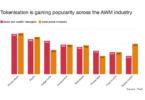This week Korea’s Financial Services Commission (FSC) published guidance on accounting for cryptocurrencies or virtual currencies. Its preference is to follow the standards of the International Accounting Standards Board (IASB). While the U.S. is consulting on a proposed standard, the IASB is reluctant to prioritize work on crypto-assets.
Hence Korea’s FSC released an accounting standard that makes the disclosure of virtual asset transactions obligatory and a guideline on how to account for transactions.
Crypto custody
In the U.S., custody of crypto-assets has become controversial after the SEC issued an accounting bulletin requiring assets held in custody to appear on the balance sheet as an asset and liability. That’s because the SEC believes there are higher technical risks that create legal risks. Typically assets held in custody are treated as belonging to clients and would not be on the balance sheet.
Korea’s stance is to consider economic control over virtual assets. Or rather that’s the plan for the future. In its view, control boils down to the level of legal protection. For example, if the custodian can use the assets freely, then they should be on the balance sheet. Or if the customer can’t assert their property rights in the event of a hack, then it should be on the balance sheet.
These considerations are part of the ‘guidance’, but disclosure is mandatory. Whether or not crypto is directly on the balance sheet, assets held in custody must be disclosed including the volume and market value for each virtual asset. There also needs to be disclosures about hacking risks and the level of insurance.
Crypto disclosures
Apart from custody, disclosures are also mandatory for virtual asset issuers and token holders. Those that hold crypto-assets have to disclose the accounting policy, the book value and the market value. They will appear as intangible assets or inventory depending on their purpose to the firm.
Accounting for self issued tokens is another controversial topic. Consider the rough balance sheet produced by FTX’s Sam Bankman Fried that included self issued tokens.
The money from issued tokens is often considered as revenues, but the timing is sometimes questionable.
In conventional accounting, if you receive payment for services in advance, that’s a liability to your client. At the point that you deliver the service, the amount changes from being a liability to revenue. Korea’s guidance suggests crypto tokens should have a similar treatment – revenue should only be recognized after any obligations relating to the tokens have been met.
Korean firms have to disclose their revenue recognition policy as well as quantities and business models. “It’s obligatory to describe in detail,” says the FSC.
The company must report the number of tokens that have not yet been released. However, the guidance states that in most cases this is a note and the assets must not appear on the balance sheet.
Years ago, Web3 startup Animoca Brands was admonished by the Australian Securities Exchange (ASX) for recognizing revenues too early for token issuances. The $2.4 million issuance related to The Sandbox metaverse that went on to be a massive earner for the company. While The Sandbox token price is down 95% from its high, it still has a market capitalization of nearly $800 million.






